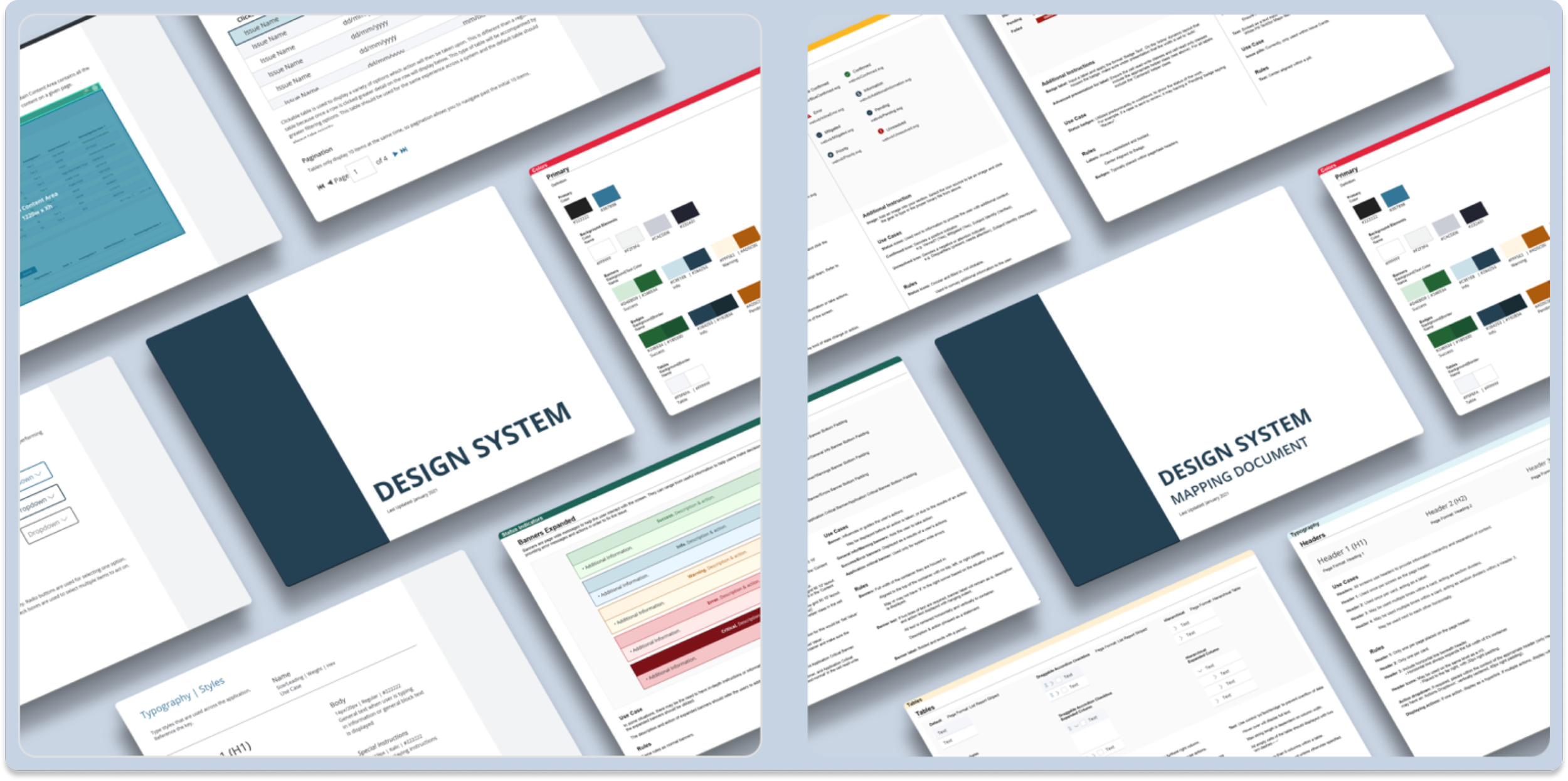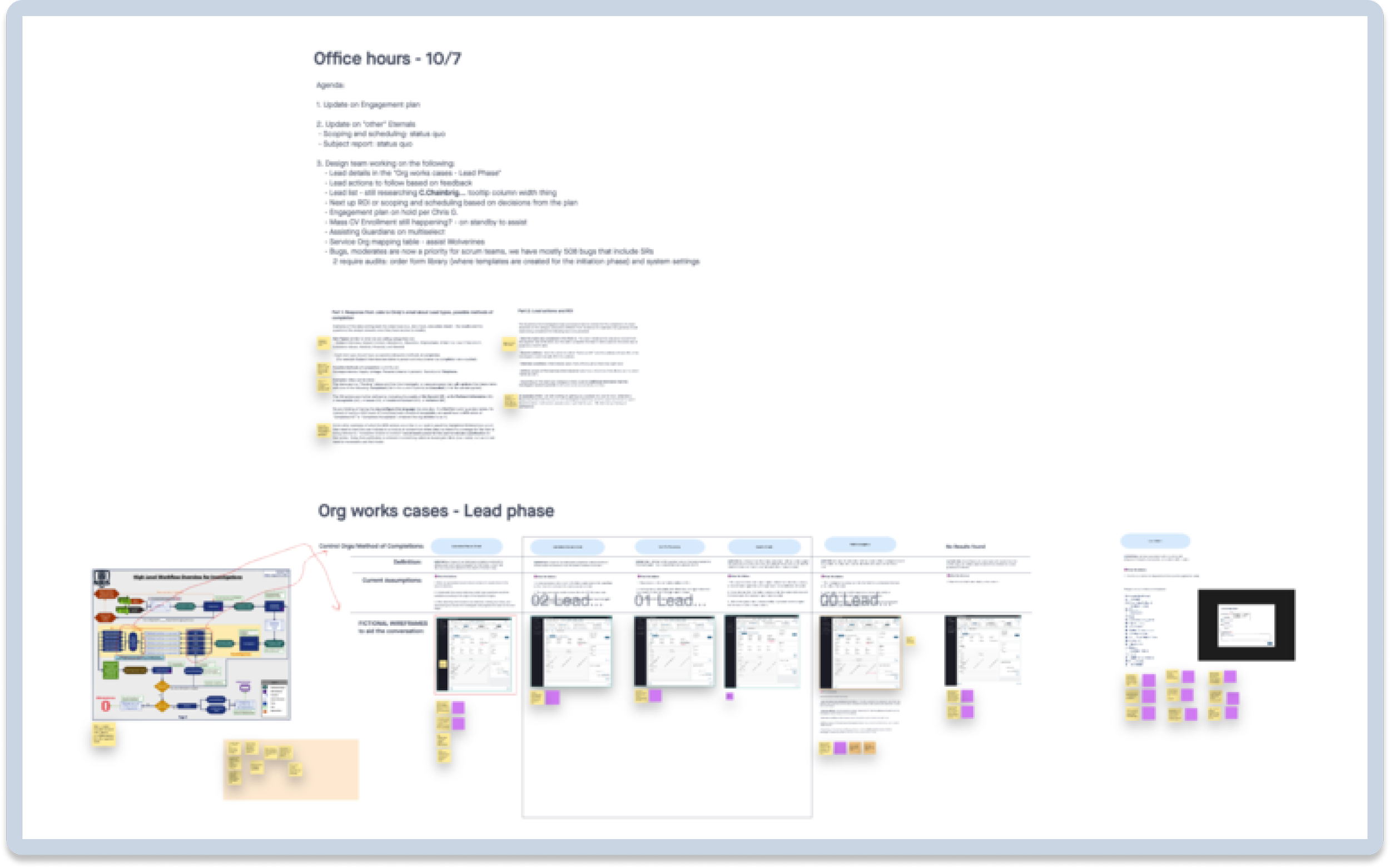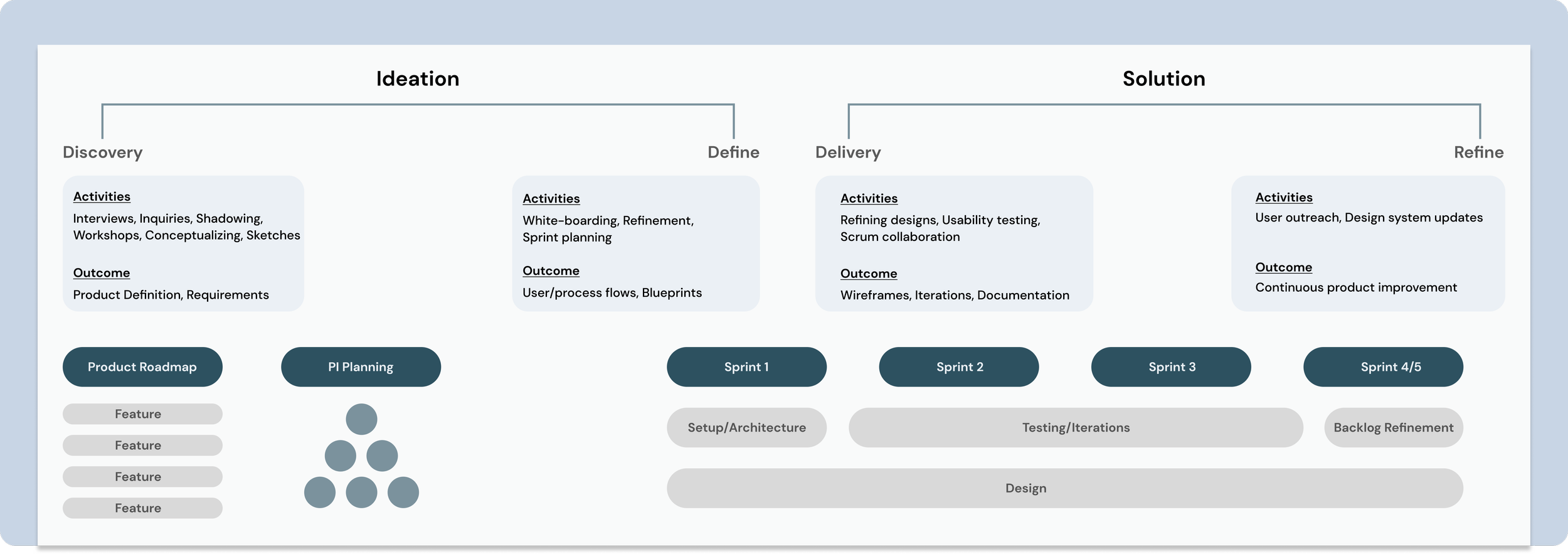Security Risk Assessment and
Management Portal
This project is about solving complex problems, working across disciplines, managing expectations, and being strategic in design and process.
The Vision
SRAMP aims to replace a suite of legacy security management systems, re-imagining the process and features and incorporating them into a single holistic touchpoint. Its ultimate goal is to standardize the security process for over 3.4 million users across the entire industry.
My Role & Responsibilities
As a senior designer, I played an key role in owning multiple complex features, working closely with customers, stakeholders, and scrum teams to ensure delivery of user-centric products.
The Challenges
The list of challenges for an endeavor of this size was not short. They had to be overcome with collaboration and strategy. Here were some of the most challenging:
“How do I create standardization and designs that can accommodate over 400 agency’s similar but nuanced needs??”
– It comes down to understanding the customers and letting them know that they are being heard. I planned, facilitated, and synthesized activities focused on co-creation and collaboration. This helps to foster a sense of ownership and commitment.
“How can I keep track and ensure design consistency across 9 scrum teams as they are building out their features?”
– I evolved a design system for accessibility and scalability with consistent design language. Each component included UX best practices, rules and use cases. Additionally, I created a mapping design for developers that links each design components to the system CRM’s library.
“How do I help keep accountability and prevent misunderstanding of requirements between 4 key stakeholders with different approaches?”
– I created living whiteboard spaces within Invision, that documented stakeholder meeting sessions, research findings, requirements, links, etc., all in one place. This made it easy for anyone out of the loop with outdated information to track and follow the conversation and provided rationale for any design decisions made.
My Design Process
Learning & Understanding
I worked closely with customers, subject matter experts and stakeholders to understand frustrations, system processes, and must have requirements. I created research plans and strategies, led workshops, interviews, and testing sessions to help inform my designs and solve problems.Ideating & Problem-solving
Collaborating between 9 development scrum teams to balance UX research, design, and development in an agile environment, setting realistic expectationsDesigning & Validating
Each set of wireframes balances highly constraining requirements, user research and UX best practicesRelearning & Reiterating
Making revisions based on new understandings and feedback from customers
Research
Each feature I tackled began with user research to learn about how they currently use the system, what their experiences have been like, and what their expectations are for the new system. I focused on an generative approach, using the information learned previously to inform and adapt my questions either on the spot or for the next session.
I led many of the user research activities. Additionally, I wrote many of the testing scripts and created note-taking templates for various activities that proved to be invaluable in capturing large amounts of user data.
An non-exhaustive list of research methodology I did
Art of the Possible Analysis
Contextual Interviews
Heuristic Analysis
Round Robin
Surveys
User Interviews
Usability Testing
Workshops “Rumbles”
Research activities lead to a vast amount of data to be synthesized, identifying trends, and potential follow up questions. Actionable results and findings are captured into a read-out deck to share with the team and stakeholders for transparency and alignment.
Design
Born from research insights and rigorous requirements, the designs of each feature are functional, effective, and enhances the customer experience. During my tenure, I’ve directly led or heavily influenced over 40% of all the features within the application.
When the initial design lead left, I stepped up to lead the team maintain design strategy and direction. This led to additional responsibilities that were beyond expectations.
Some of my design deliverables
400+ high quality wireframes
16 Service & Product Blueprints
9 Sitemaps
1 Accessible Design System
1 Developer Mapping Document
25+ Prototypes
My design tools
Sketch
InVision
Adobe CC
Impact & Insights
It can’t be stressed the breadth and impact that this application will have. Although I have to keep some things confidential, this truly is a game changer that will positively benefit over 3.4 million users, saving thousands of manpower, and millions in wasted resources.
I’ve made significant impacts as a designer and leader, consistently delivering at a high level with high skill and knowledge. At the time, this was one of the largest projects at Fjord/Accenture, not only in term of size but also due to it’s complexities and implications. I was praised for my leadership, mentoring/guidance, collaboration and communication skills, as well as efficiency in design.






